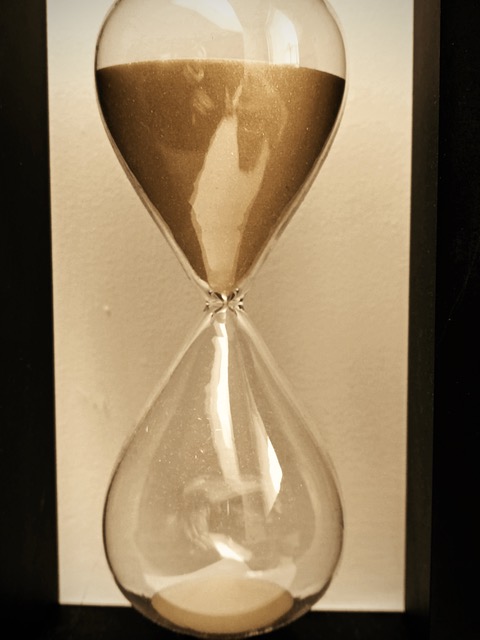
Lonesome. Photo © Karethe Linaae
Every month, a small group of art- and history buffs meet in an esteemed library in Ronda, Andalucía to hear a Spanish philosopher talk about anything between heaven and earth. It can be a book, a piece of music, a painting, or some random object he chooses to elucidate – because that’s what philosophers do. They philosophize. This time, the chosen theme was hourglasses.
Why an hourglass, one might ask?

Hourglass. Photo © Karethe Linaae
Human beings have always had a certain understanding of the passage of time. The Neanderthals followed the day from sunrise to sunset and probably were more familiar with the journey from cradle to grave than we are today. The first man-made timekeeper we know of - the sundial – was invented around 1500 BC. At the time, it was believed that the Sun revolved around the Earth every 24 hours. It took 3,000 years before Copernicus clarified that the Earth moves around the Sun and rotates on its axis. It was also around the time, that the hourglass was invented. Since it could only measure limited time segments, it lost its practical purpose as soon as better timepieces were invented. However, the hourglass took on an important symbolic role, especially in Fine Arts, where they represented the finiteness of life. In historical paintings, the hourglass is commonly held by a skeleton.
A clearer reminder should not be needed…

Religious art, Osuna. Photo © Karethe Linaae
As we enter a new year, our thoughts inevitably turn to times gone by and the time to come. Time is often described as twofold: objective time (clock time) and subjective time or how time is experienced by the individual. Consider the difference between an endless hour spent waiting at the dentist’s office compared to how furiously fast an hour passes when watching an exciting thriller.
It can feel like our time (like the sand in the hourglass) speeds up as we age or move towards the 22. Century. Simultaneously, we have become excessively time-obsessed, so much so that the clock seems to control us - not vice versa. Many of us tend to focus on and talk endlessly about what we don’t have time to do: exercise, learn Swahili, read books or make Sourdough bread.

Falling. Photo © Karethe Linaae
Everything we do is a choice. And no matter what we do with our time, the sand keeps falling in our hourglass. Although I promised myself not to make any New Year’s resolutions this year, my resolute plan is not to focus on what I (think) I don’t have time for, but to contemplate all the wonderful things and journeys I wish to spend my precious time on.
2025 is here. Be sure to sit comfortably, enjoying the remaining sand, not just obsessing about the sand that ceaselessly disappears down your hourglass.

Mathilde’s happy feet. Photo © Karethe Linaae